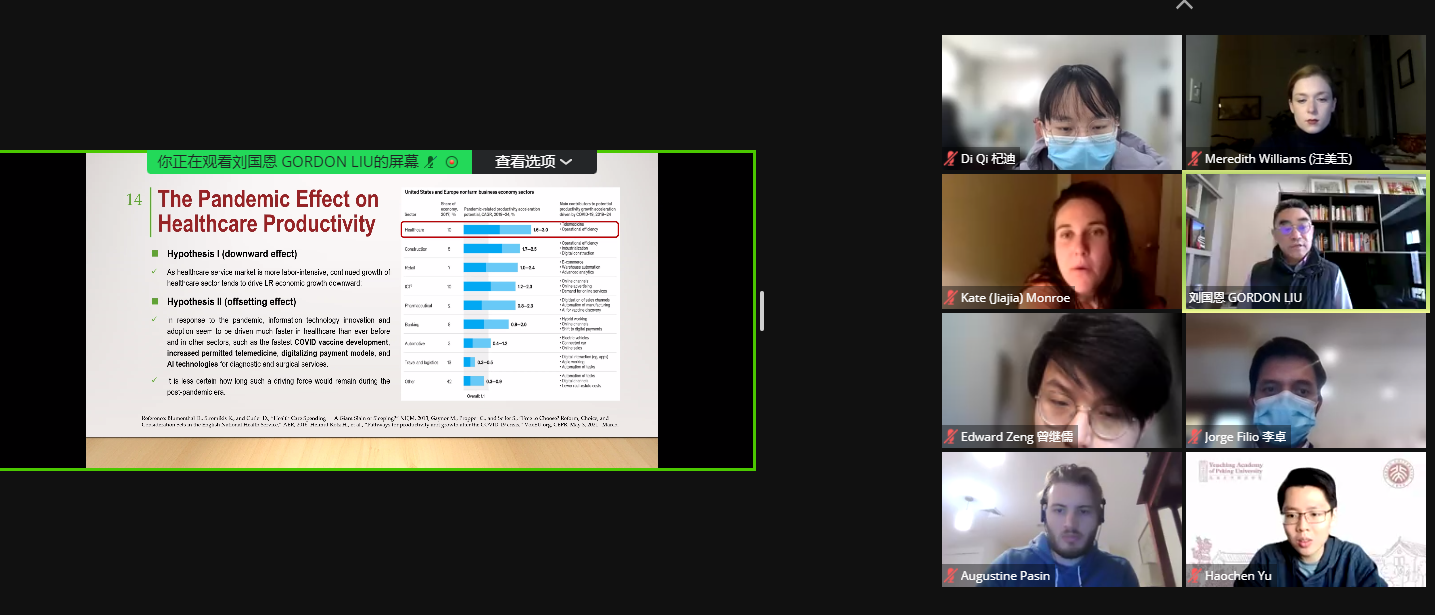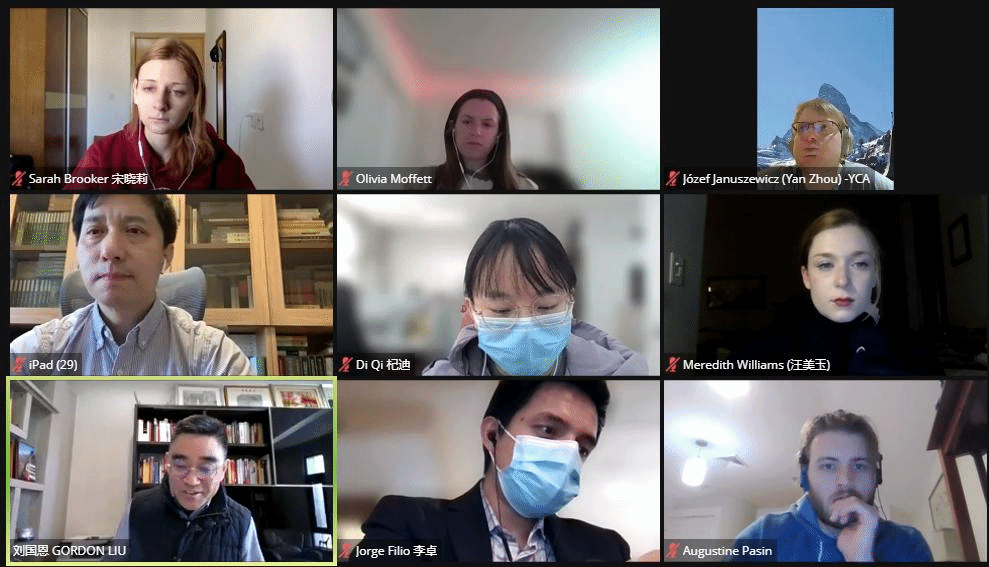On March 31, Gordon Liu, Professor of Economics at Peking University National School of Development (NSD), taught the first Topics in China Studies Lecture Series class of the 2021/2022 Spring semester titled “The Baumol Cost Disease in Healthcare and Post-pandemic Economy.” Prof. Lu Yang, Yenching Academy Director of Graduate Studies, hosted the class and was joined online by Yenching Scholars from across the globe. The lecture explored whether healthcare productivities improved above the market average during the COVID-19 pandemic, resulting in (technological) changes deviating from William Baumol’s hypothesis of high-cost inflation and low labor productivity in labor-intensive sectors.
Prof. Liu began the class by introducing the concept of the Baumol's cost disease, its history, and its basic principles. American economist William Baumol first proposed the idea in 1965, and it has been verified by empirical data in the growth stages of many economies. In theory, Baumol divides the economy into sectors with rapid productivity development, such as various electronic products, modern agriculture, etc., with reduced labor demand due to technological progress, and sectors with relatively lagging or stable productivity and high demand for labor, such as art performances. The rigid demand for labor in the education and health care sectors is even greater. The labor demand in the latter sector has always remained strong, and the efficiency of service supply is difficult to improve through technological substitution, resulting in a significant increase in labor wages. In addition, some of the labor force eliminated by the productivity improvement of the first sector will be further absorbed into the latter service sector after exiting the market.

The professor explained that healthcare costs expanded rapidly relative to GDP growth worldwide in the last four decades. He described price changes in the US, drawing on inflation data from different sectors between 2000 and 2020, noting that healthcare services, college tuition and fees, wages, and housing prices surpassed the overall inflation rate. Similarly, employment enlarged in labor-intensive service areas, including healthcare (physicians, nursing homes, and hospitals) and non-farming work.
Furthermore, Prof. Liu discussed the factors influencing healthcare spending decomposition, noting that the debates on this issue have centered on two primary drivers: the increase in unit prices and the surge in the quantity of the services per patient. Likewise, he discussed the 2017 Chicago Booth Initiative on Global Markets Survey of leading economists’ views on the relevance of the Baumol effect in contemporary times, noting that most of the respondents agreed that the hypothesis was relevant to construing rising cost and productivity across sectors.
Moreover, the professor reviewed the adoption rate of digital technologies and virtual settings in healthcare since the pandemic. He remarked that although AI-related job postings in healthcare were relatively low in the pre-Covid-19 pandemic era compared to the information and finance industries, the pandemic and the shift toward virtual work boosted the utilization of AI-related healthcare employment postings and digital health technologies. He also noted a similar upsurge in telehealth investment, consumer usage, provision, and regulatory systems to adopt digital health services and technology. This situation resulted in increased productivity in healthcare than in other sectors.
Nonetheless, given the potential for some workers to be pushed out of the industry due to improved technology adoption, Prof. Liu remarked that further research is required to determine how this situation would shape the economic growth scenario across the world.

Likewise, Prof. Liu considered the impact of healthcare inflation and measures to evaluate the implications of healthcare cost inflation on the GDP. He explained that understanding savings in hospital costs and consumers’ health value gained (the contribution of healthcare service to health) are essential to assessing and avoiding overestimating the impact of inflation costs and productivity in the health sector.
Several students raised questions following the end of the presentation to gain clarity on some issues. One question centered on the best way to determine whether the increase in healthcare quality emanated from changes in the healthcare industry rather than changes in the socio-economic environment like the closure of a coal-powered plant or the availability of faster ambulances to transport the sick to the hospital. Another question centered on how the private-led healthcare system in the US compares with the public-funded healthcare systems in other countries with regards to the Baumol effect. Prof. Liu remarked on the need to consider the imperfections in all models, noting that societies must face opportunity costs as they plan their healthcare industry irrespective of the funding model. Also, he added that despite the US having one of the most expensive healthcare systems globally, its healthcare productivity is also one of the highest in the world, for instance, when one considers the US share of annual innovative medicine outputs.